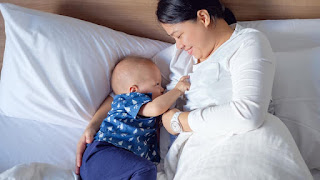By Sharon Rose
It is World Breastfeeding Week 2020, August 1 - 7th, and we are talking about understanding breastfeeding, and its benefits. Mothers, I breastfed my 3 children, and to my surprise, I needed guidance in how to breastfeed successfully. I learned that it is most beneficial to your baby and yourself, to be patient, understand the changes to your body, and find support, as your milk comes in. Milk production starts while you are pregnant. Your body will start to produce a nutrient-rich, syrupy, pre-milk, Colostrum, while you are pregnant. You will notice your breast starting to increase in size at the halfway point of your pregnancy, about 16 to 22 weeks. This is due to the increased hormonal levels stimulating the production of colostrum. Your baby will need this yellow to whitish color miracle milk, colostrum, in its first few days of life. Colostrum includes proteins, carbohydrates, fats, vitamins, minerals, and proteins (antibodies) that will fight disease-causing agents such as bacteria and viruses.
During pregnancy, you may or may not have some leaking of colostrum from your breast. If you should, you can use nursing pads to tuck in your bra to protect your clothing, so keep some handy. If you don’t have any leaking, don’t take this as an indication that you won’t be successful with breastfeeding.
Once your baby is born, if you are a first-time mother, your breast milk will take 3 to 4 days, and possibly up to 7 days to come in. As a first-time mother, my milk came in after 4 days. If you have had a child before, it may take less time. Be patient, because the time frame varies from one mother to another. You will notice that your breasts will become more firm once your milk comes in. I learned that breastfeeding is natural, but not easy, as I had expected it to be. Your obstetrician may offer the support services of a Lactation Consultant during your prenatal visits. If not, ask for information on working with a Lactation Consultant before your baby is born. Most hospitals, after you give birth, provide this support service. A Lactation Consultant is helpful in dispelling any myths, preparing you for what to expect, and how to have a happy, healthy breastfeeding experience, for you and your baby.
Copyright, Breastfeeding, Sharon Rose, Parents Want to Know 101, August 2, 2020. All rights reserved.












